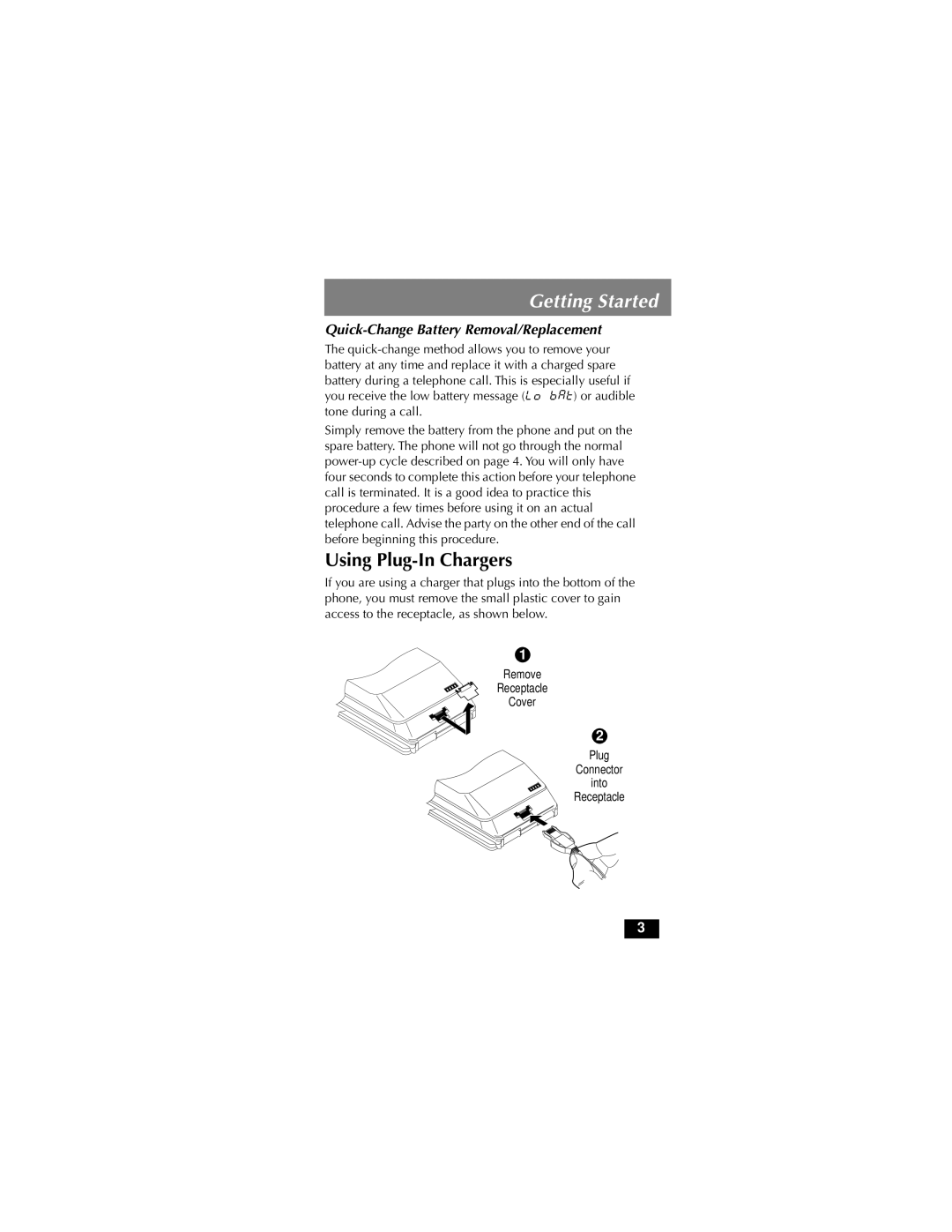MicroTAC specifications
The Motorola MicroTAC, introduced in 1989, is an iconic mobile phone that set the stage for the evolution of modern cellular technology. Known for its innovative design, the MicroTAC was one of the first truly portable mobile phones, demonstrating how far telecommunications had come since the bulky models of earlier decades.One of the standout features of the MicroTAC was its flip design, which allowed the phone to be compact when closed and easy to carry. When opened, the phone revealed a numeric keypad and a small monochrome display, which provided essential functions and caller ID information. This flip mechanism not only contributed to its portability but also protected the keypad and screen from damage when not in use.
The MicroTAC was notable for its lightweight plastic casing, which made it significantly lighter than its contemporaries. Weighing just under 250 grams, it was a remarkable feat of engineering at the time. The phone had a unique “antenna-in-handle” design, which contributed to its sleek appearance while also optimizing signal reception. This innovation was part of Motorola’s effort to make mobile communication accessible and convenient.
In terms of battery life, the MicroTAC featured a rechargeable NiCd battery that provided several hours of talk time. While modern smartphones boast days of battery life, the MicroTAC was considered admirable for its time, allowing users the freedom to communicate on the go without frequent recharges.
The Motorola MicroTAC operated on analog networks, specifically using the Advanced Mobile Phone System (AMPS). This technology allowed for a clearer voice transmission and was crucial in the early days of mobile communication, enabling users to connect in various environments where fixed lines were impractical.
Additionally, the MicroTAC boasted features like call waiting, auto redial, and a phone book capable of storing multiple contacts—a considerable leap forward from earlier mobile devices.
Despite its simplicity compared to modern smartphones, the Motorola MicroTAC laid the groundwork for future mobile technologies and design principles. Its combination of portability, innovative engineering, and user-friendly features solidified Motorola's reputation as a leader in telecommunications. The MicroTAC remains a nostalgic symbol of the early mobile telephony era and a testament to the foundational technologies that paved the way for today's devices.

